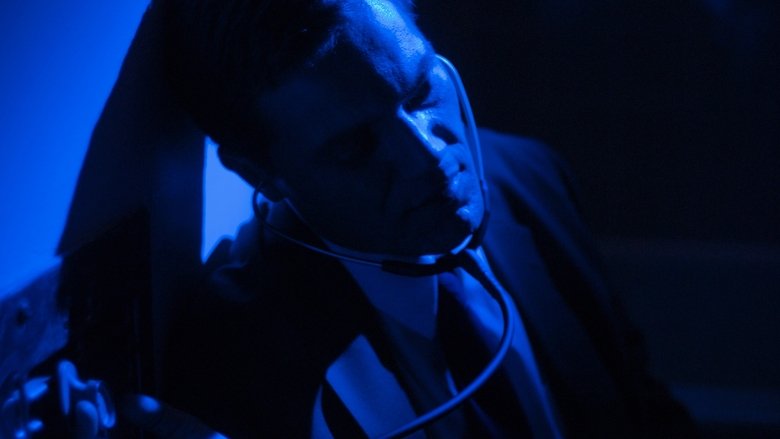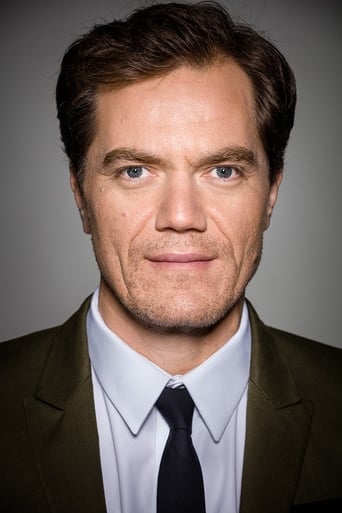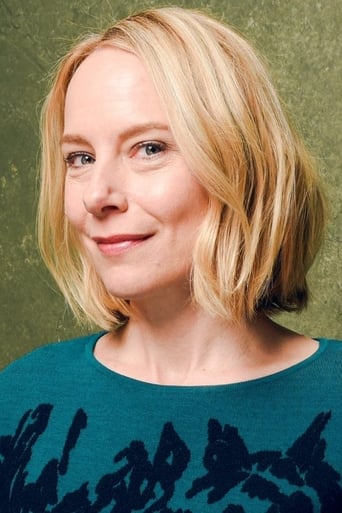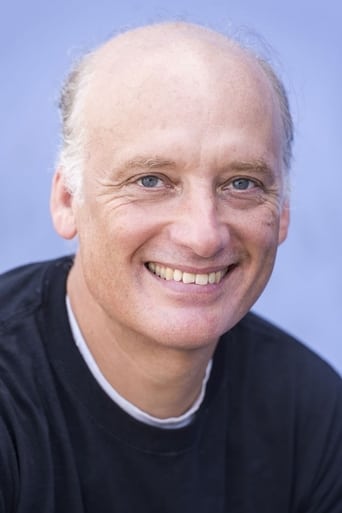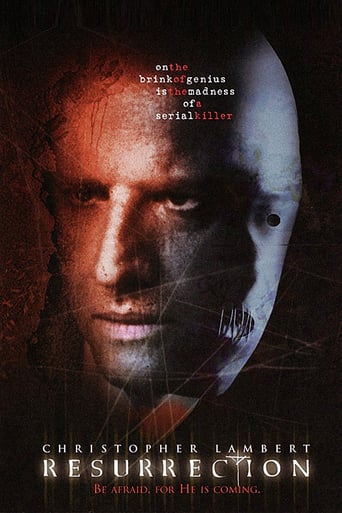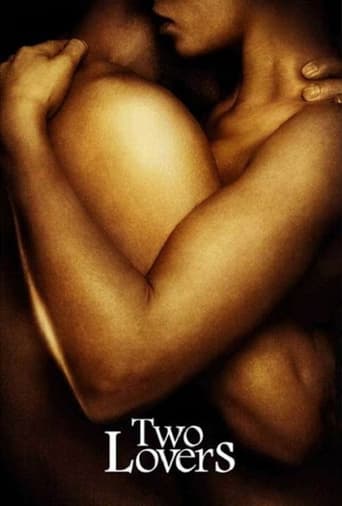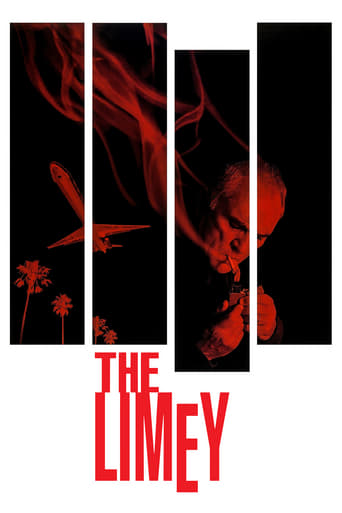The Missing Person (2009)
Private detective John Rosow is hired to tail a man on a train from Chicago to Los Angeles. Rosow gradually uncovers the man's identity as a missing person; one of the thousands presumed dead after the 9/11 terrorist attacks on the World Trade Center. Persuaded by a large reward, Rosow is charged with bringing the missing person back to his wife in New York City.
Watch Trailer
Free Trial Channels
Cast


Similar titles
Reviews
It's easily one of the freshest, sharpest and most enjoyable films of this year.
The movie's neither hopeful in contrived ways, nor hopeless in different contrived ways. Somehow it manages to be wonderful
Ok... Let's be honest. It cannot be the best movie but is quite enjoyable. The movie has the potential to develop a great plot for future movies
A movie that not only functions as a solid scarefest but a razor-sharp satire.
The Missing Person is a contemporary noir that plays with the classic genre conventions in a comic way, although without invalidating or trivialising the content (scenes where you may expect an escalation of suspense often intentionally end bathetically as convention meets the real world). Private Detective Rosow is a Chicago-based private detective originally from New York who receives a short notice commission to tail a man and a boy cross country. He's an alcoholic and clinically depressed, but he still has some level of ability to achieve his task. "Missing Person" on a surface level refers to the guy Rosow is tailing, but also is about Rosow being missing in an existential way, someone for whom family and community have become concepts only. The bathos allows you to connect in a deeper way with his state, by challenging your familiarity. What's shocking about modern society is how the dissolution of traditional social structures, and omnipresent material convenience has led to so many "missing" people.Fundamentally The Missing Person is an image driven movie, the shot I liked best was a shot at night in the dining cart of the train to California, a cupola of light surrounded by thick darkness, the characters hurtling in cheap comfort through vast emptiness. The image that is iconic (or would be if anyone had watched the movie on release) is of Rosow in the dark with his day-glo glasses. I think from reading about the movie, many reviewers didn't get that it was a movie where much effort had been made on the visuals; you need to stick with it and carry on inspecting it to realise the contrary. At the start, Buschel uses the most purely functional credits anyone could imagine, they look like the yellow writing you get in PowerPoint presentations (supposedly as yellow on blue is the easiest writing to read if you're dyslexic). America is shot just exactly how it is (one of very few movies that have reminded me of my trip to America), and it can be assumed that this means the shooting is amateurish. It's actually more of a statement at the start of the movie, this movie is going to look the opposite of a John Alton shot movie, it's going to be as unmannered as we the filmmakers can make it.
Michael Shannon has a face built for noir, but writer/director Noah Buschel doesn't exploit it well enough in "The Missing Person". The film's a neo-noir, but slack pacing, amateurish dialogue, unnecessary nods to 9/11 and a low budget hamper things.Still, the overall arc of Bushchel's screenplay is very interesting. It stars Shannon as John Rosow, a hard-drinking, hard-boiled (is there any other?) private investigator who's tasked with trailing a man named John Fullmer. Here's the interesting part: Rosow learns that Fullmer has been both a "missing person" and presumed dead for many years. Though Rosow is tasked with "bringing in" Fullmer so that he may be reunited with his family, he opts against it. Better to let Fullmer live peacefully in his newly fabricated life. This reprieve echoes Rosow's own private demons, which he too must "let go of" if he hopes to "build a new life". The film suggests that Roscow's evocative of ancient noir gum-shoes precisely because he is always caught "out of time", locked into dwelling about a past that he can't let go of and so keeps on scarring.The film contains several visual allusions to and recreations of Edward Hopper's "New York Movie", an oil-on-canvas painting from 1939. Why Hopper? Hopper's proved a huge influence on noir. His "Nighthawks" was cooked up after reading Ernest Hemingway's noirish "The Killers" (the filmed version of Hemingway's tale would later be influenced by Hopper's paintings), but even two decades before this, long before noir was even born, Hopper was churning out moody paintings evocative of early noirs. His 1921 etching "Night Shadows", for example, looks like an ahead-of-its-time high-angle shot from a Fritz Lang movie and his "House by the Railside" (and numerous early paintings of anonymous apartment blocks and motels) would prove a huge influence on Hitchcock's "Psycho". Walter Hill ("The Driver", "Hard Times") and Wim Wenders ("Hammet", "Paris Texas", "The American Friend", "The End of Violence") would openly consult Hopper's work when filming the aforementioned films.So Bushchel's nod to Hopper is no surprise. What's surprising is his choice of "New York Movie". This particular painting consists of a movie usherette (blonde, bosomy; a typical noir gal) leaning against a cinema wall. The painting is then split roughly in half such that its left side is bathed in a darkness which offers only glimpses of audience members and a murky cinema screen, upon which escapist, idyllic rolling hills are projected. Meanwhile, the painting's right half serves as the usherette's own mind-space, well-lit, with passionate red curtains, lamps and a mysterious staircase suggestive of her "thoughts up there". Despite - as is traditional of Hopper - strong feelings of anonymity, loneliness, tranquillity and isolation, you sense a whirlpool of thoughts emanating from the usherette. Significantly, the painting is bisected by a phallic pillar, filled with swirling patterns evocative of nightmarish, half-coalesced thoughts. The pillar almost seems to signify the dividing point where fantasy is either (or bleeds into) projected and externalised (the cinema screen/object) or internalised/contemplated (usherette/subject). Rosow seems caught in a similar dilemma, brooding like the usherette instead of letting go like Hopper's eye-ball zapped audience.The film's narrative is a loose retelling of "The Flitcraft Parable", a moment of digression in Dashiell Hammett's noir novel "The Maltest Falcon". One of literature's great digressions, the parable involves detective Sam Spade telling a girl the story of a middle class real estate agent called Flitcraft who, after nearly dying, has an existential epiphany. Flitcraft then decides to abandon his wife, kids, large income and perfect American family. "He went just like that," Spade says, "like a fist when you open your hand." The irony is that Spade then stumbles upon Flitcraft several years later living a "new life" almost identical to his "old one". Having wiped the slate clean, Flintcraft thus inadvertently rebuilt that which he was running away from. Men, Spade implies, adjust themselves to the world. Spade, however, adjusts the world to himself. This, of course, is a very Satrean, existential commitment. Bushchel's retelling of the parable doesn't go this far.7.5/10 – Worth one viewing. See "Black Dahlia", "The Big Sleep" and "A Prairie Home Companion".
Writer/Director Noah Buschel is a name we will likely recognize more as audiences who missed the theater release of this very quiet moody piece discover it on DVD. In many way this story and cinematic recreation of the story reminds us of the old dark Bogart mysteries - in tone of telling, in filming gestures, and in the casting. It is a true 'film noir' revealed slowly and insidiously in tones of umber, gray, and washed out colors so prevalent in the early color films and so additive to this production. For this viewer it works on every level. Private Detective John Rosow (Michael Shannon in a brilliantly understated performance) is a down and out, alcoholic, internalized and bruised man who is hired to shadow a man from Chicago to Los Angeles. Rosow seems to be easily manipulated by his 'boss' Gus (Papitos) and sidekick Charley (Amy Ryan), but when Rosow reaches Los Angeles he discovers that the man he is trailing - Harold Fulmer (Frank Wood) - is delivering a young Mexican boy to one Don Edgar (Yul Vasquez) who seems to be running an orphanage for lost kids to either sell to adopting parents or manipulate otherwise. He is sidetracked by an agent Lana Cobb (Margaret Colin) but with the help of a taxi driver Hero (John Ventimiglia) he finally finds his targeted Harold who insists that he is a lost man, a man who only wants to remain missing to help people like the young Mexican who was an unwanted boy to find some degree of happiness. Rosow reports his findings, and surprisingly is told that Harold wife Megan (Linda Emond) will pay a huge sum of money just to retrieve her missing husband. It seems Harold has been missing since 9/11, but instead of dying in that explosion Harold escaped and decided the world needed help- the only way he felt he could deliver it was to leave behind his wealthy wife and lifestyle and simply do good, anonymous deeds. Rosow meets with Megan, gets the money, but in doing so Rosow must relive the fact that he has lost his wife and world as a result of 9/11, changing his priorities of how to end his assignment: does he turn over Harold and take the small fortune or does he follow his heart? He does the right thing. Though the story is a strongly told mystery thriller it is first and foremost a story about the loss and disorientation that have paralyzed so many people following 9/11. The beauty of THE MISSING PERSON is the message that in many ways we are all 'missing persons' now. How we elect to deal with that is the part of the story we individually must complete. Michael Shannon enters the ranks of significant film actors with this deeply touching role. This is a little film that deserves a very wide audience. Grady Harp
After seeing "Neal Cassady" at the Woodstock Film Festival last year, I was interested to see what young director Noah Buschel would do with the noir genre. I was not disappointed.Like his beat "biopic," Buschel turns the genre right on it's head and makes something completely fresh and new. "The Missing Person" has very little to do with it's surface elements, and much more to do with innovative and original film-making.Michael Shannon delivers his best performance to date. It's him in full movie star wattage. He looks great, he sounds great, and he makes a great damaged hero. The rest of the cast is so superb you almost wish there was more of them in the film.Perhaps the best use of jazz music I've heard in a film.There will be those who want a faster paced movie. More violence and quickness and loudness. They should just watch "Brick." That was a good example of a shallow neo-noir. This is not "Brick." This is a deep and unique film about loss. And also, somehow, a hilarious film about loss.Geoffrey Gilmore, the festival director, introduced "The Missing Person" the night I saw it at Sundance. He said that it was the first film accepted at Sundance this year and that Buschel was doing something no one else was doing right now, which was going back to old forms and making them new again. A lost art, he said. Something that 70's directors used to do a lot.The key point he made was that "The Missing Person" was an utterly unique film in the guise of a noir film. I couldn't agree more.


